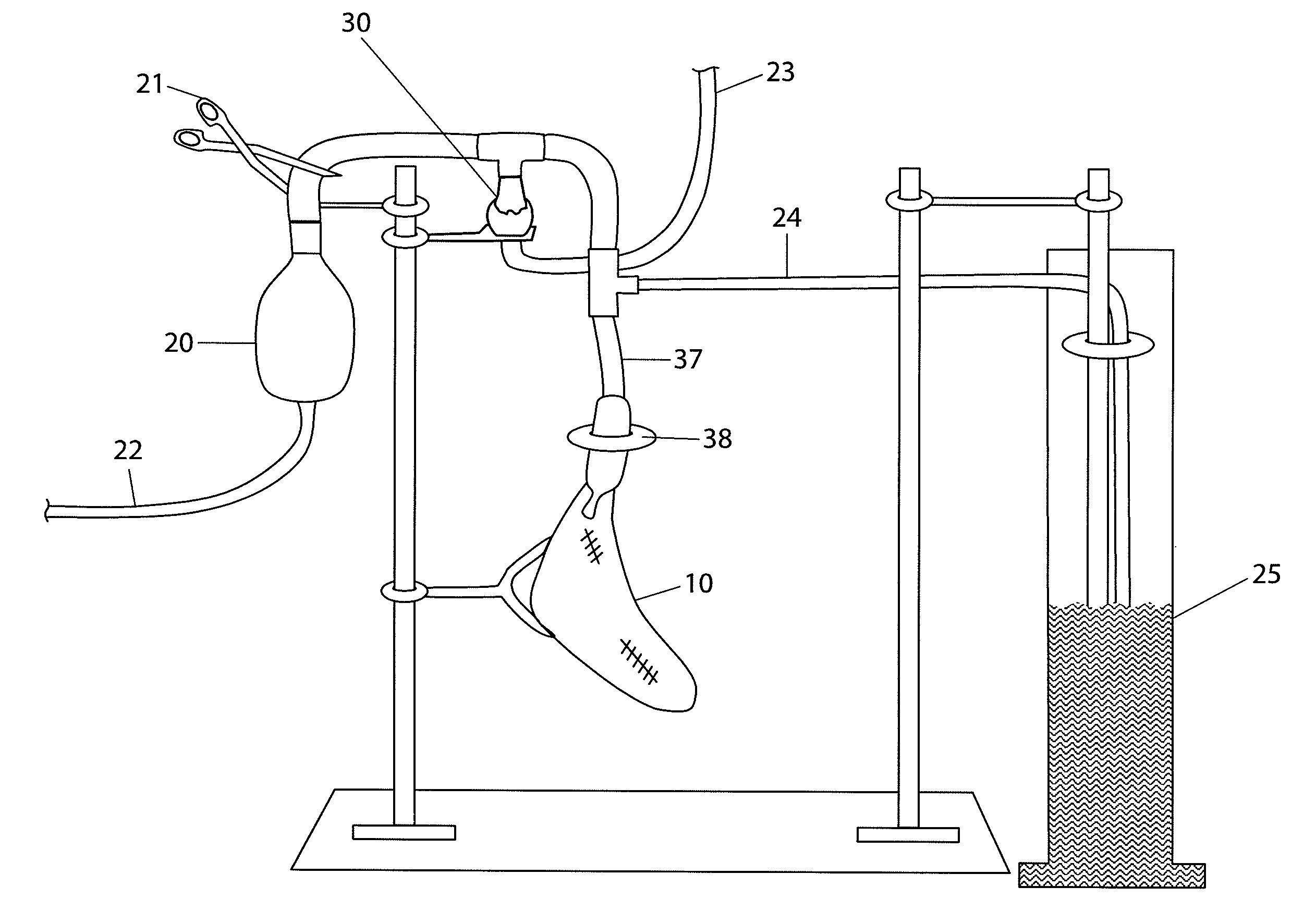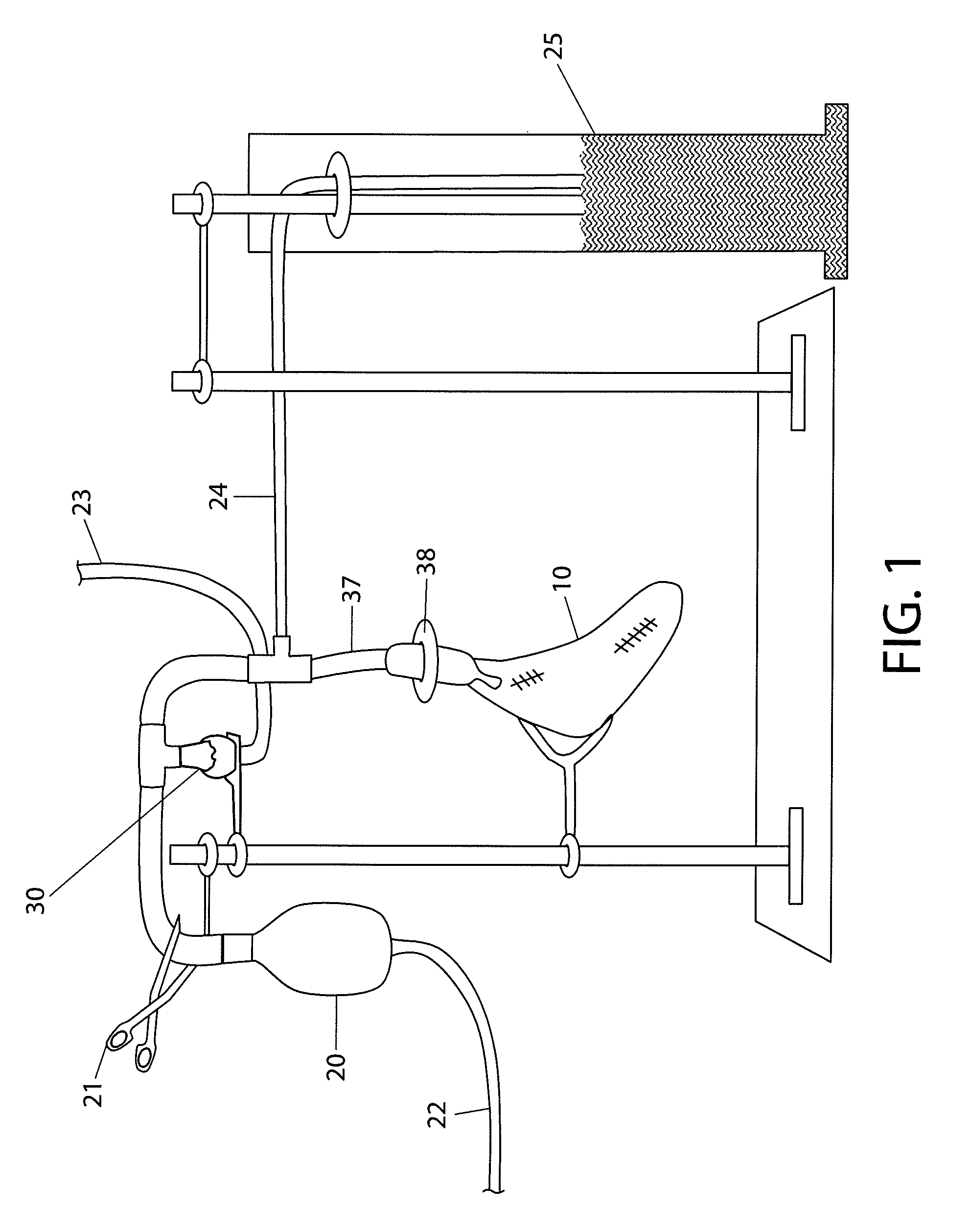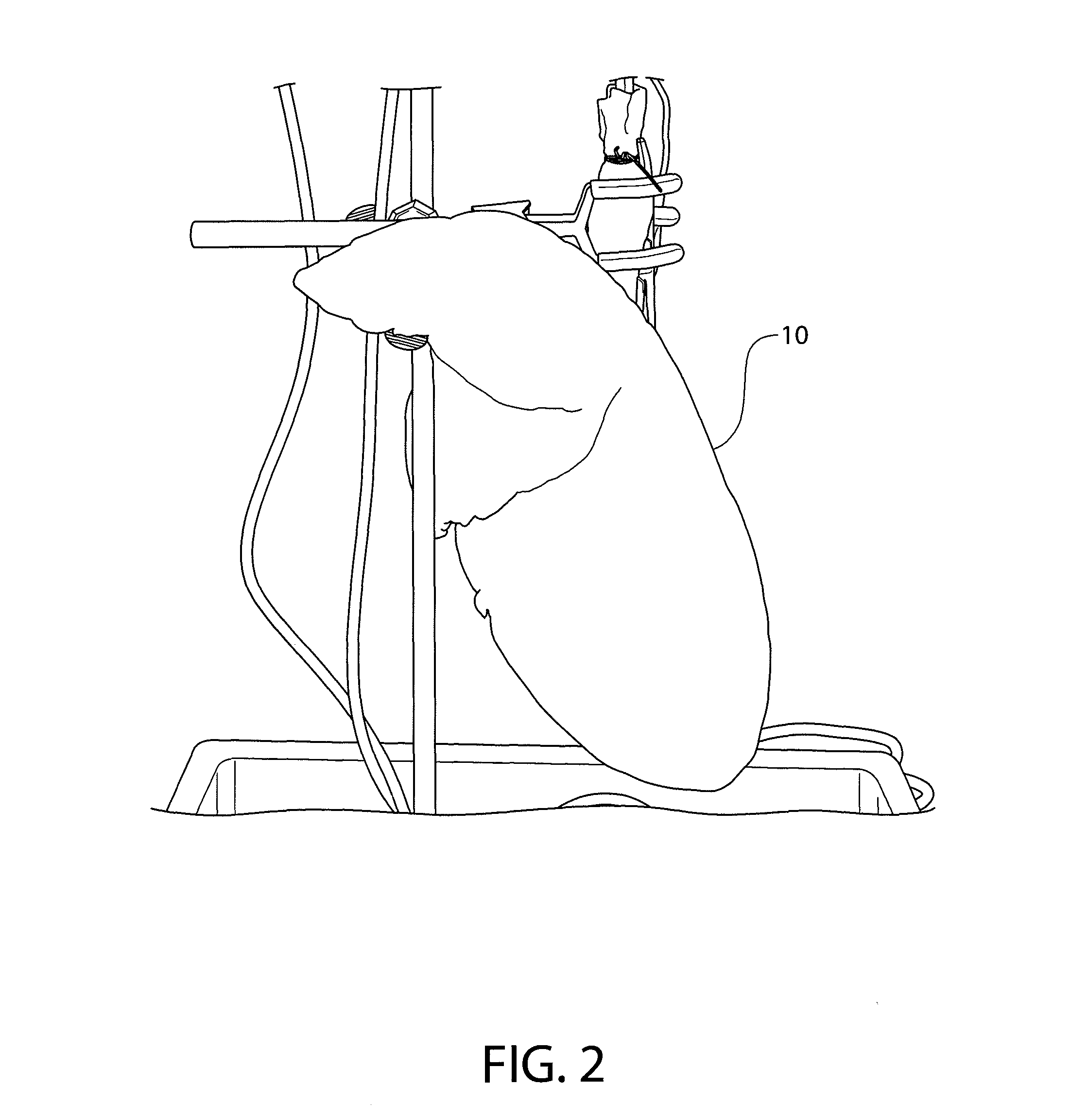System and method for detection and repair of pulmonary air leaks
a technology for pulmonary air leakage and pulmonary artery, which is applied in the field of detection and repair of pulmonary air leakage, can solve the problems of increasing morbidity and mortality, persistent air leakage, and dramatically increasing the length of hospital stay
- Summary
- Abstract
- Description
- Claims
- Application Information
AI Technical Summary
Benefits of technology
Problems solved by technology
Method used
Image
Examples
Embodiment Construction
[0020]In one embodiment, a biphasic air leak sealing system is used to seal air leaks, without surgery, by importing into the lung a liquid that follows the path of the escaping gas. The liquid finds the leaks because those are the only areas with any air flow. This does not require the operator to find the leaks. The same premise is also used to find air leaks by using a tracer liquid, which also follows the path of the escaping gas.
[0021]An exemplary leak sealing system comprises two components: a prosealant and an activator. The prosealant can be a building block compound that remains liquid until cross-linked or coagulated by the activator. With a chest tube that is inserted into the patient's chest cavity on suction, the prosealant is introduced into the air stream in a nebulized form. The liquid selectively accumulates at all leak sites. Because the prosealant does not seal by itself, the lung passageways are not blocked and the sealant collects only at the site of the air lea...
PUM
 Login to View More
Login to View More Abstract
Description
Claims
Application Information
 Login to View More
Login to View More - R&D
- Intellectual Property
- Life Sciences
- Materials
- Tech Scout
- Unparalleled Data Quality
- Higher Quality Content
- 60% Fewer Hallucinations
Browse by: Latest US Patents, China's latest patents, Technical Efficacy Thesaurus, Application Domain, Technology Topic, Popular Technical Reports.
© 2025 PatSnap. All rights reserved.Legal|Privacy policy|Modern Slavery Act Transparency Statement|Sitemap|About US| Contact US: help@patsnap.com



